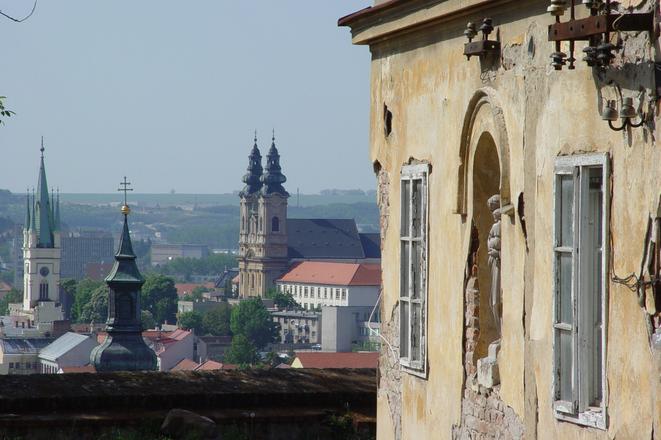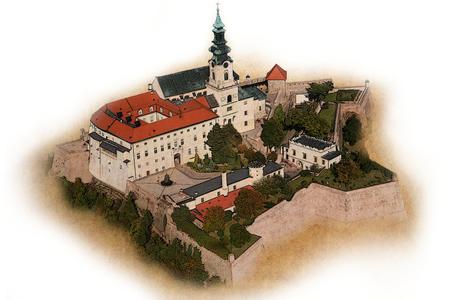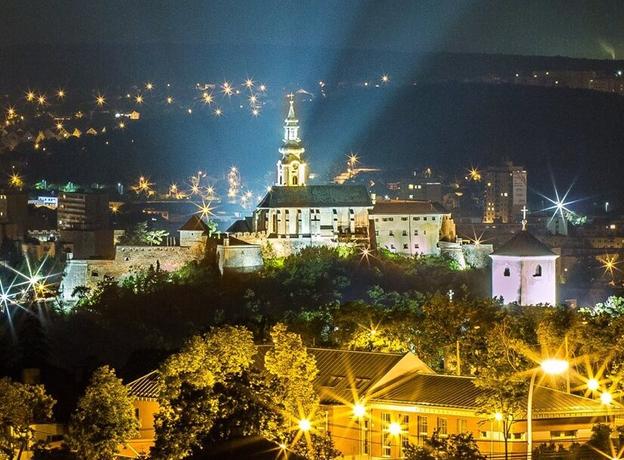This is an article from our archive of travel guides, Spectacular Slovakia. We decided to publish it for our readers, making only necessary adjustments. For up-to-date information and feature stories, take a look at the latest edition of our Nitra City Guide.

Nitra is where small Slavic tribes first settled in the 7th century. The colony thrived and eventually grew into the greater Nitra principality, which by the ninth century covered much of what is now west Slovakia.
Nitra was also home to the first Slavic ruler on Slovak territory: Pribina. The Prince of Nitra could be found on 20 crown banknotes.
Another Nitra first: Pribina had the first Christian church in Slovakia consecrated here in 828. Why the pagan Pribina did this is unclear. Some historians say it was a gift for his religious wife and her entourage from southern Germany. Others argue the church was erected for a colony of foreign merchants in Nitra.
But shortly thereafter, the self-rule was over. In 833 the area was conquered and absorbed into the Great Moravian Empire, then later fell under the rule of the Hungarian Kingdom for nearly 1,000 years.
Castle hill and Zobor
The main site in modern Nitra is Castle Hill. Above an arched entrance from Župné námestie is Pribina Square, where a bronze statue of the old prince greets visitors. The pink Greater Seminary building houses a library containing 60,000 books, the oldest of which dates back to 1475. Next door, Corgoň - the mythical figure that Nitra’s brewery is named after - tirelessly steadies the corner of the House of Bishop Kluch.
The way then winds up the hill, passes a gold plague column, and penetrates a series of archways to the castle, highlighted by the 14th-century Upper Gothic Cathedral.
The view from the top covers the entire city, including the Agrokomplex Convention Centre, the Agriculture University, Calvary Hill, Svätoplukovo námestie and the frighteningly impressive Andrej Bagar Theatre.
To the north is Zobor Mountain (588 metres). A castle ruin sits near the top, as do the remains of the oldest monastery on Slovak soil.
One local legend concerning the monastery revolves around a monk named Svorad. A student of Saints Cyril and Methodius, he lived in a Zobor cave to avoid the temptations of town life, instead spending his days fasting and meditating. But not even the life of a devout hermit could satisfy Svorad. So, to better relate to Jesus’ pain, he tied a chain around his waist. Svorad cinched it so tight that his skin eventually grew over it - and he thereby secured himself a place in Nitra folklore.
Spectacular Slovakia travel guides
A helping hand in the heart of Europe thanks to the Slovakia travel guide with more than 1,000 photos and hundred of tourist spots.
Detailed travel guide to the Tatras introduces you to the whole region around the Tatra mountains, including attractions on the Polish side.
Lost in Bratislava? Impossible with our City Guide!
See some selected travel articles, podcasts, traveller's needs as well as other guides dedicated to Nitra, Trenčín Region, Trnava Region and Žilina Region.



